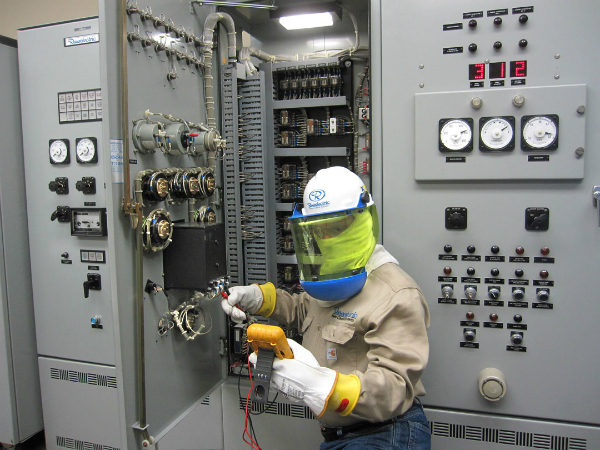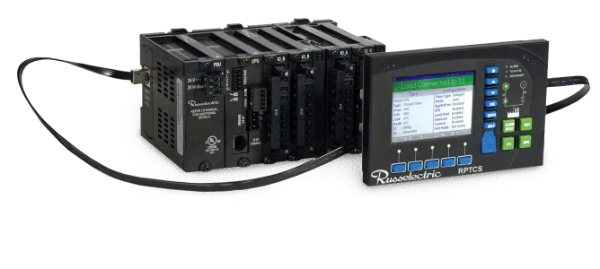
Articles
Features
Test & Measurement
Tools and Equipment
Updating power control systems with minimal disruption
January 29, 2020 | By Steve Dunn
 Photo: Adobe Stock
Photo: Adobe Stock Aging power control and automation systems can carry risks of downtime, particularly due to the low availability of (a) replacement components and (b) the corresponding knowledge required install them. And of course, as components age, their risk of failure increases.
With advances in technology over time, components are discontinued and become unavailable. Service personnel lose the know-how to support the older generation of products. While this makes component replacement challenging, at the same time, the alternative of complete system replacement can be extremely expensive—and may require far more downtime and/or additional space than the facility can provide.
The solution to this problem is, instead, the careful maintenance and timely replacement of power control and automation system components. By replacing only some of them at any given time, facilities can benefit from new capabilities and improved reliability, while maintaining uptime. Such services are particularly useful in data centres and health-care facilities, where power control is critically important and downtime is very costly.
Automatic transfer switch (ATS) controllers and switchgear systems require different types of maintenance and upgrades, due to the differences in their components, but both types of systems can realize cost savings and improved uptime. The following are some examples that can extend the life of a power control system.
Audits and preventative maintenance
Before creating a maintenance schedule and beginning upgrades, getting an expert technician into a facility to audit the existing system provides the ability to prioritize. With a full equipment audit, an application engineer who specializes in upgrading existing systems can provide detailed migration plan and preventative maintenance plans.
Through these audits and plans, technicians can ensure all equipment is and remains operational and identify which components are likely to become problematic before they actually fail and cause downtime.

ATS control upgrades can improve switch operating accuracy and functionality. Photo: Russelectric
Upgrades for ATS control systems
For ATS controller systems, upgrades can provide greater power monitoring and metering. By replacing the controls for aging ATS systems, an upgrade ensures all components will continue to be available when replacements are needed. In comparison, trying to locate out-of-production components for an old control package can mean high costs and a long turnaround time for repairs.
Some service providers can minimize downtime by pre-wiring the controls and fully testing them within their own production facilities before shipping them to customers. This way, an ATS is shut down only for as long as it takes to install the new controls retrofit.
Switchgear system upgrades
For switchgear systems, four main types of upgrades can improve operations and reliability without requiring a full system replacement: operator interface (OI) upgrades, programmable logic controller (PLC) upgrades, breaker upgrades and controls retrofits. Each may be necessary at a different time for a different power control system.
OI upgrades
Similar to an ATS control upgrade, an OI or human-machine interface (HMI) upgrade for a switchgear power control system can greatly improve usability, making monitoring easier and more effective. The upgrade enables operators to see
the system’s power flow, alarms and events in real time, without requiring them to walk through the system itself to search for indicator lights.
While upgrading the OI or HMI does not affect the actual system control, it does support a number of day-to-day benefits, including faster and easier troubleshooting and timelier maintenance.
PLC upgrades
Many existing systems rely on a legacy PLC architecture that is approaching the end of its useful life. An upgrade can protect investments in power control systems by adding the newest technology with minimal program changes.

Updated operator panel technology can improve monitoring capabilities for users. Photo: Russelectric
New PLC and communication hardware can be added to controls while maintaining the system’s existing logic, operations and wiring while converting it for the latest technology. This type of upgrade, which does not require new logic or operational sequence, greatly reduces the likelihood the system will need to be fully recommissioned and minimizes downtime necessary for testing.
Using a systematic sequence, PLCs can be replaced one at a time, converting the communications between them along the way. This way, systems can remain operational throughout the process.
Breaker upgrades
Breaker upgrades may be necessary to ensure system protection and reliability, even through many years of normal use. Two types of these modifications are available for switchgear power control systems: retrofills and retrofits.
A retrofill breaker upgrade calls for an entirely new device in place of an existing system. This can maintain existing measures, extend service life and provide added benefits of power metering and arc flash protections.
A breaker retrofit upgrade can provide these same benefits, but through a process of re-engineering an existing configuration, which requires a somewhat more labour-intensive installation.
Whether a system requires a retrofit or retrofill upgrade will largely be determined by the existing power breakers. And for medium-voltage (MV) systems, protective relays may be upgraded from single-function solid-state or mechanical protective devices to multi-function protective devices.
Controls retrofits
For older switchgear systems that predate PLCs, one of the most effective upgrades for extending system life and serviceability is a controls retrofit. This process adds a new interior, control panels and doors. Customers can replace end-of-life components, upgrade to the latest sequence standards and enjoy the same benefits in terms of greater visibility as described earlier for OI upgrades.
The major consideration for this type of retrofit is how to maintain the switchgear control wiring interconnect location, so as to prevent the need for new wiring between other switchgear, ATSs and generators and, thus, achieve major cost savings compared to a replacement.
In some cases, facilities install temporary generators and control panels so the existing system can be upgraded strategically, one cubicle at a time, while maintaining full operations.
Steve Dunn is an aftermarket product line manager for Russelectric. For more information, visit www.russelectric.com.
Editor’s note: This article appeared in the October 2019 issue of Electrical Business magazine.
Print this page